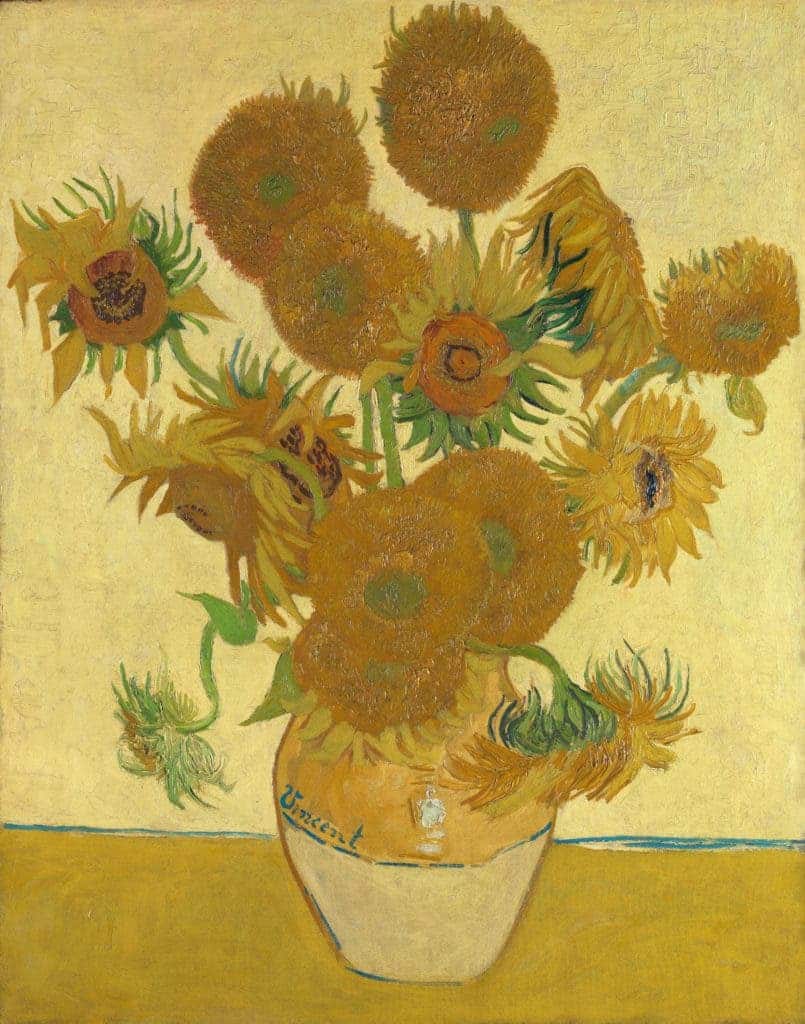Some of the world’s most famous and cherished photos might be losing their colors: due to Van Gogh’s light-sensitive paint, his famous sunflowers might fade to brown.
The Van Gogh Museum in Amsterdam has some bad news: Van Gogh’s most famous paintings may be losing some of their color. Using a newly pioneered technique, they found that the sunflowers’ trademark yellow is slowly turning brown. The reason for this is because Van Gogh used a light-sensitive yellow paint.
So far, the change isn’t visible to the naked eye, but the customized X-ray showed that the yellow used in many of the sunflower paintings is set to lose its remarkable vibrancy.
“It is very difficult to say how long it would take for the change to be obvious and it would depend a lot on the external factors,” said Frederik Vanmeert, a materials science expert at the University of Antwerp, who was part of the research team.
“We were able to see where Van Gogh used the more light-sensitive chrome yellow, the areas that the restorers should look out for over time for discolouration … We were also able to see that he used emerald green and a red lead paint in very small areas of the painting which will become more white, more light, over time.”
However, not all of the paintings will degrade equally — Van Gogh used two different yellow chrome pains, and only one of them is particularly sensitive to light. In order to determine this, researchers carried out a painstakingly detailed X-ray mapping. The technique is so detailed that researchers were able to obtain a level of resolution that allowed them to see how the paint crystallites aligned along the direction of Van Gogh’s brush strokes
It’s not the first time something like this has been reported. Just last year, a different study found that LED lights may be accelerating decoloration in Van Gogh’s paintings. However, Soraa, an LED manufacturer in California, contends that Xenon lamps, not LED lamps, were used in the research, and that “Xenon lamp spectra are vastly different than those of white-emitting LEDs for illumination.”
The museum in Amsterdam, like many other art museums, has already taken steps to prevent degradation of its paintings: five years ago, they significantly reduced the lighting in the presentation rooms, but even so, some paintings (like Van Gogh’s) seem to be affected. The head of collection and research at the museum, Marije Vellekoop, said they are closely following the results of the study and will decide on necessary measures.
“At the moment, we are processing all the research results of this iconic painting, after which we determine how we will pay further attention to discolouration in our museum. We know that the discoloured pigment chrome yellow has been used a lot by Van Gogh, we assume that this has also been discoloured in other paintings.”










